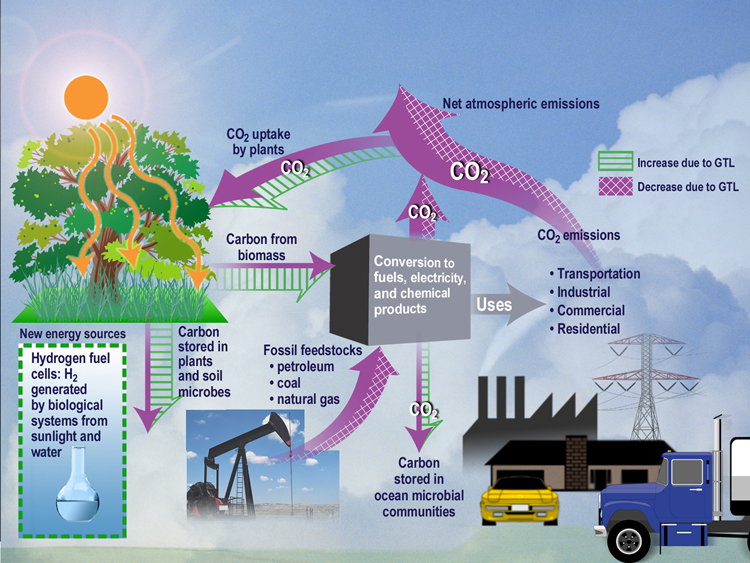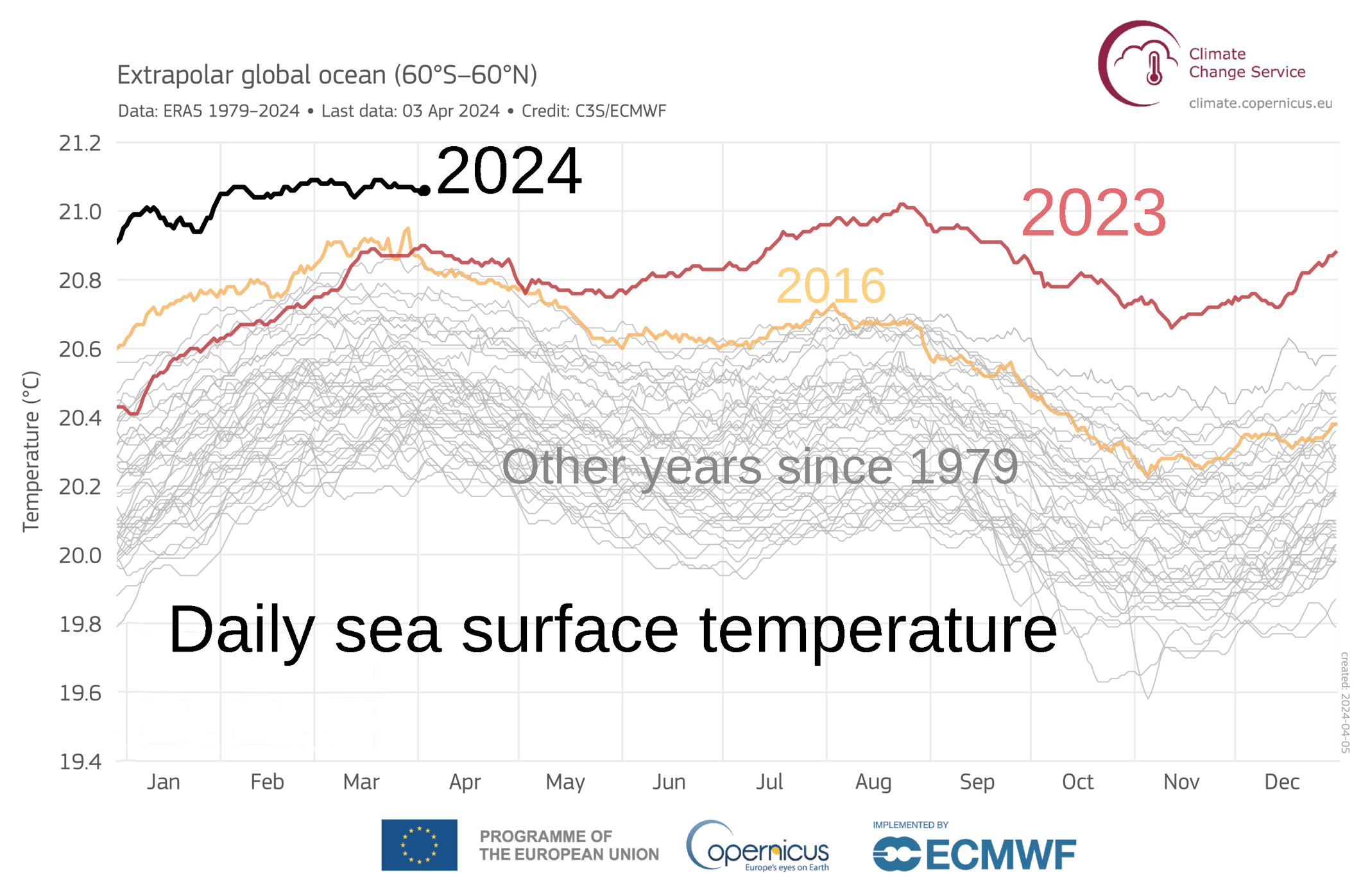|
Atmospheric Radiation Measurement Climate Research Facility
The Atmospheric Radiation Measurement User Facility (ARM User Facility) is a multi-laboratory United States Department of Energy scientific user facility used for national and international global climate research efforts. The ARM User Facility consists of three heavily instrumented fixed-location atmospheric observatories and mobile and aerial research facilities that measure radiative properties of the atmosphere, particularly cloud and aerosol formation processes. Continuous data from these sites, as well as supplemental data obtained through intensive field research campaigns, are available to scientists online through the ARM Data Archive. ARM is collaboratively managed by nine DOE national laboratories. Mission ARM seeks to provide the climate research community with strategically located in situ and remote-sensing observatories designed to improve the understanding and representation, in climate and earth system models, of clouds and aerosols as well as their interactions ... [...More Info...] [...Related Items...] OR: [Wikipedia] [Google] [Baidu] |
United States Department Of Energy
The United States Department of Energy (DOE) is an executive department of the U.S. federal government that oversees U.S. national energy policy and energy production, the research and development of nuclear power, the military's nuclear weapons program, nuclear reactor production for the United States Navy, energy-related research, and energy conservation. The DOE was created in 1977 in the aftermath of the 1973 oil crisis. It sponsors more physical science research than any other U.S. federal agency, the majority of which is conducted through its system of National Laboratories. The DOE also directs research in genomics, with the Human Genome Project originating from a DOE initiative. The department is headed by the secretary of energy, who reports directly to the president of the United States and is a member of the Cabinet. The current secretary of energy is Chris Wright, who has served in the position since February 2025. The department's headquarters are in sou ... [...More Info...] [...Related Items...] OR: [Wikipedia] [Google] [Baidu] |
Utqiagvik, Alaska
Utqiagvik ( ; , ), formerly known as Barrow ( ), is the borough seat and largest city of the North Slope Borough in the U.S. state of Alaska. Located north of the Arctic Circle, it is one of the northernmost cities and towns in the world and the northernmost in the United States, with nearby Point Barrow as the country's northernmost point. Utqiaġvik's population was 4,927 at the 2020 census, an increase from 4,212 in 2010. It is the 12th-most populated city in Alaska. Name The location has been home to the Iñupiat, an indigenous Inuit ethnic group, for more than 1,500 years. The city's Iñupiaq name refers to a place for gathering wild roots. It is derived from the Iñupiat word , also used for '' Claytonia tuberosa'' (" Eskimo potato"). The name was first recorded by European explorers in 1853 as "Ot-ki-a-wing" by Commander Rochfort Maguire, Royal Navy. John Simpson's native map dated 1855 has the name "Otkiawik", which was later misprinted on a British Admiralty char ... [...More Info...] [...Related Items...] OR: [Wikipedia] [Google] [Baidu] |
Earth System Science
Earth system science (ESS) is the application of systems science to the Earth. In particular, it considers interactions and 'feedbacks', through material and energy fluxes, between the Earth's sub-systems' cycles, processes and "spheres"—atmosphere, hydrosphere, cryosphere, geosphere, pedosphere, lithosphere, biosphere, and even the magnetosphere—as well as the impact of human societies on these components. At its broadest scale, Earth system science brings together researchers across both the natural and social sciences, from fields including ecology, economics, geography, geology, glaciology, meteorology, oceanography, climatology, paleontology, sociology, and space science. Like the broader subject of systems science, Earth system science assumes a holistic view of the dynamic interaction between the Earth's spheres and their many constituent subsystems fluxes and processes, the resulting spatial organization and time evolution of these systems, and their variability, s ... [...More Info...] [...Related Items...] OR: [Wikipedia] [Google] [Baidu] |
Graciosa
Graciosa Island () (literally "graceful" or "enchanting" in Portuguese), also referred to as the ''White Island'', is a volcanic island in the Atlantic Ocean. It is the northernmost of the Central Group of islands in the Azores archipelago. The ovular Portuguese island has an area of , a length of and a width of . Its landscape is dominated by a central caldera (the Caldeira) located in the southeast. History In addition to the other islands of the Central Group, Graciosa was explored by Portuguese navigators during the first quarter of the 15th century, although there exist no accounts of the first sighting of the island. May 2, 1450 has frequently been referred to as the date of the island's "discovery", although there exists no documentation to support this date. Paradoxically, it is clear that in 1440, by order of Prince Henry the Navigator, cattle and swine were settled on the island in order to facilitate colonization. Similarly, it is unclear the names of the first ... [...More Info...] [...Related Items...] OR: [Wikipedia] [Google] [Baidu] |
Portugal
Portugal, officially the Portuguese Republic, is a country on the Iberian Peninsula in Southwestern Europe. Featuring Cabo da Roca, the westernmost point in continental Europe, Portugal borders Spain to its north and east, with which it shares Portugal-Spain border, the longest uninterrupted border in the European Union; to the south and the west is the North Atlantic Ocean; and to the west and southwest lie the Macaronesia, Macaronesian archipelagos of the Azores and Madeira, which are the two Autonomous Regions of Portugal, autonomous regions of Portugal. Lisbon is the Capital city, capital and List of largest cities in Portugal, largest city, followed by Porto, which is the only other Metropolitan areas in Portugal, metropolitan area. The western Iberian Peninsula has been continuously inhabited since Prehistoric Iberia, prehistoric times, with the earliest signs of Human settlement, settlement dating to 5500 BC. Celts, Celtic and List of the Pre-Roman peoples of the Iberia ... [...More Info...] [...Related Items...] OR: [Wikipedia] [Google] [Baidu] |
Sea Surface Temperature
Sea surface temperature (or ocean surface temperature) is the ocean temperature, temperature of ocean water close to the surface. The exact meaning of ''surface'' varies in the literature and in practice. It is usually between and below the sea surface. Sea surface temperatures greatly modify air masses in the Atmosphere of Earth, Earth's atmosphere within a short distance of the shore. The thermohaline circulation has a major impact on average sea surface temperature throughout most of the world's oceans. Warm sea surface temperatures can develop and Tropical cyclogenesis, strengthen cyclones over the ocean. Tropical cyclones can also cause a cool wake. This is due to turbulent mixing of the upper of the ocean. Sea surface temperature changes during the day. This is like the air above it, but to a lesser degree. There is less variation in sea surface temperature on breezy days than on calm days. Coastal sea surface temperatures can cause offshore winds to generate upwelling ... [...More Info...] [...Related Items...] OR: [Wikipedia] [Google] [Baidu] |
Atmospheric Radiation
An atmosphere () is a layer of gases that envelop an astronomical object, held in place by the gravity of the object. A planet retains an atmosphere when the gravity is great and the temperature of the atmosphere is low. A stellar atmosphere is the outer region of a star, which includes the layers above the opaque photosphere; stars of low temperature might have outer atmospheres containing compound molecules. The atmosphere of Earth is composed of nitrogen (78%), oxygen (21%), argon (0.9%), carbon dioxide (0.04%) and trace gases. Most organisms use oxygen for respiration; lightning and bacteria perform nitrogen fixation which produces ammonia that is used to make nucleotides and amino acids; plants, algae, and cyanobacteria use carbon dioxide for photosynthesis. The layered composition of the atmosphere minimises the harmful effects of sunlight, ultraviolet radiation, solar wind, and cosmic rays and thus protects the organisms from genetic damage. The current composition of ... [...More Info...] [...Related Items...] OR: [Wikipedia] [Google] [Baidu] |
Meteorology Research And Field Projects
Meteorology is the scientific study of the Earth's atmosphere and short-term atmospheric phenomena (i.e. weather), with a focus on weather forecasting. It has applications in the military, aviation, energy production, transport, agriculture, construction, weather warnings and disaster management. Along with climatology, atmospheric physics and atmospheric chemistry, meteorology forms the broader field of the atmospheric sciences. The interactions between Earth's atmosphere and its oceans (notably El Niño and La Niña) are studied in the interdisciplinary field of hydrometeorology. Other interdisciplinary areas include biometeorology, space weather and planetary meteorology. Marine weather forecasting relates meteorology to maritime and coastal safety, based on atmospheric interactions with large bodies of water. Meteorologists study List of meteorological phenomena, meteorological phenomena driven by solar radiation, Earth's rotation, ocean currents and other factors. The ... [...More Info...] [...Related Items...] OR: [Wikipedia] [Google] [Baidu] |





